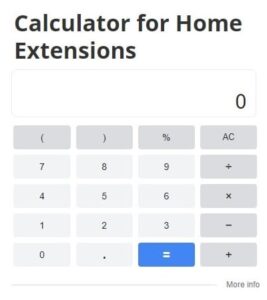
At Home Owners Association, we understand the growing interest in eco-friendly homes. Many homeowners are eager to build sustainable houses but are concerned about the costs involved.
Fortunately, there are numerous grants for building eco-friendly homes available to help offset these expenses. In this post, we’ll explore various grant options and guide you through the application process.
Where Can You Find Eco-Friendly Home Grants?
Eco-friendly home grants come from various sources, each with unique focuses and requirements. These grants can significantly reduce the costs of building sustainable homes for homeowners across Australia.
Federal Government Grants
The Australian Government offers several grants to promote eco-friendly home construction. The Clean Energy Finance Corporation (CEFC) provides funding for energy-efficient projects, including residential buildings. In 2023, they allocated $300 million for green home loans, offering lower interest rates for homes that meet high energy efficiency standards.

Another federal initiative is the Small-scale Renewable Energy Scheme. This program provides financial incentives for installing eligible small-scale renewable energy systems (such as solar panels and solar water heaters). These incentives can offset the initial costs of incorporating renewable energy into your eco-friendly home design.
State and Local Government Grants
Many state and local governments in Australia offer their own eco-friendly home grants. The Victorian Government’s Solar Homes Program provides rebates and interest-free loans for solar panel systems, batteries, and hot water systems. Hot water rebates of up to $1000 are available for eligible heat pump and solar hot water systems. In New South Wales, the Home Solar Battery Scheme offers interest-free loans for solar battery systems.
These programs often have limited funding and specific application periods. We suggest you check your state and local government websites regularly for the most up-to-date information on available grants.
Non-Profit and Private Sector Grants
Non-profit organizations and private companies also contribute to the eco-friendly housing movement through grants and incentives. The Alternative Technology Association (ATA) occasionally offers grants for innovative sustainable housing projects. Some banks and financial institutions provide green home loans with favorable terms for eco-friendly constructions.
Bank Australia’s Clean Energy Home Loan, for example, offers a 0.4% discount on your home loan interest rate for up to five years when you buy or build a home that meets high energy efficiency standards.
Exploring Your Options
To maximize your chances of securing funding for your eco-friendly home, try to explore all available options and compare the benefits of each grant type. Consider factors such as:
- Grant amount
- Eligibility criteria
- Application deadlines
- Reporting requirements
Home Owners Association remains committed to helping our members navigate these opportunities to make eco-friendly home construction more accessible and affordable across Australia. As you search for the right grant for your project, you’ll need to understand the eligibility requirements for these eco-friendly home grants. Let’s examine these requirements in more detail in the next section.
What Are the Eligibility Requirements for Eco-Friendly Home Grants?
Securing grants for eco-friendly homes in Australia requires applicants to meet specific eligibility criteria. These requirements vary depending on the grant provider and program objectives. This chapter outlines key information to help you understand what’s typically expected when applying for these grants.
Income Thresholds
Many eco-friendly home grants in Australia have income restrictions. The Victorian Solar Homes Program sets an annual household income cap of $180,000 for solar panel rebates. The New South Wales Home Solar Battery Scheme targets households with annual incomes up to $180,000. These thresholds ensure that financial assistance reaches those who need it most. Check the specific income requirements for each grant you consider, as they can differ significantly between programs.
Location and Property Specifications
Grant eligibility often depends on your location and property type. The Queensland Government’s Solar for Rentals Trial resulted in 670 systems being installed in Bundaberg, Gladstone, and Townsville, with a collective capacity of 4 megawatts. Some grants are exclusive to new builds, while others cater to existing homes undergoing renovations. The South Australian Home Battery Scheme is open to all grid-connected South Australian households, but the subsidy amount varies based on Energy Concession Holder status.
Green Building Features
To qualify for eco-friendly home grants, your project typically needs to incorporate specific sustainable features. The Clean Energy Finance Corporation’s green home loan program offers innovative loans for homes with a 7.5 star rating or higher and a solar system. Common green features that may be required or favored in grant applications include:
- Solar panels or solar hot water systems
- Energy-efficient appliances and lighting
- Rainwater harvesting systems
- Double-glazed windows
- Proper insulation
Energy Efficiency Standards
Meeting certain energy efficiency standards is essential for most eco-friendly home grants. The Nationwide House Energy Rating Scheme (NatHERS) is widely used in Australia to assess a home’s energy efficiency. Many grants require a minimum NatHERS star rating, often 7 stars or higher. For example, the ACT Government’s Home Energy Efficiency Upgrade Program offers rebates for improvements that boost a home’s energy efficiency rating.

When you apply for grants, prepare to provide detailed plans and specifications that demonstrate how your home will meet or exceed these energy efficiency standards. This might include energy modeling reports, architectural drawings, and product specifications for key components like insulation and windows.
Understanding these eligibility requirements increases your chances of a successful grant application. Research each grant opportunity thoroughly and consult with energy efficiency experts to ensure your project aligns with the criteria. Meeting these requirements not only improves your funding prospects but also contributes to creating a more sustainable and energy-efficient home. The next chapter will guide you through the application process for eco-friendly home grants, helping you navigate the steps to secure funding for your sustainable building project.
How to Apply for Eco-Friendly Home Grants
Research and Identify Suitable Grants
Start your application process by conducting thorough research on available grants that match your project. The Australian Government’s Grants and Programs finder serves as an excellent resource for federal, state, and local grant opportunities. This free guided search will help you find grants, funding and support programs from across government. Visit your state government’s website and check with local councils for region-specific programs. The ACT Government’s Sustainable Household Scheme (offering zero-interest loans of up to $15,000 for energy-efficient home improvements) exemplifies such programs.

Don’t overlook private sector initiatives. Some banks offer green home loans with favorable terms. Bank Australia’s Clean Energy Home Loan provides a discount for borrowers who buy or build homes which achieve a minimum of 7-stars under the Nationwide House Energy Rating Scheme.
Prepare Your Documentation
After you identify potential grants, collect all necessary documentation. This typically includes:
- Proof of income (tax returns, pay stubs)
- Property details (title, location, current energy rating)
- Project plans and specifications
- Cost estimates from licensed contractors
- Energy efficiency assessments or ratings
For solar panel installations, you might need to provide a quote from a Clean Energy Council accredited installer. The Victorian Solar Homes Program requires this as part of the application process.
Submit a Strong Application
Complete application forms with precision and thoroughness. Emphasize how your project aligns with the grant’s objectives. If you apply for the South Australian Home Battery Scheme, highlight how your battery installation will contribute to grid stability and reduce your reliance on mains electricity.
Provide clear, concise answers to all questions. Use specific examples and data to support your claims. If the grant focuses on innovation, explain how your eco-friendly home incorporates cutting-edge sustainable building materials or design principles.
Follow Up and Meet Additional Requirements
Stay proactive after submitting your application. Some grant programs may request additional information or clarification. Respond promptly to any inquiries to keep your application moving forward.
If your grant receives approval, you’ll likely need to meet certain conditions before receiving funds. This might include providing progress reports, allowing site inspections, or submitting final documentation upon project completion. The Queensland Government’s Household Resilience Program requires before and after photos of home improvements to verify the work done.
The application process for eco-friendly home grants can be competitive. We’ve observed members successfully secure grants by presenting well-researched, compelling applications that clearly demonstrate the environmental and community benefits of their projects. Follow these steps to position yourself well for accessing funding for your sustainable home build or renovation.
Final Thoughts
Building an eco-friendly home contributes to a sustainable future, and grants make this dream more accessible. We explored various grants for building eco-friendly homes, including federal and state programs, as well as initiatives from non-profits and private entities. Each grant type has specific eligibility requirements, such as income thresholds, property specifications, and energy efficiency standards.

Successful grant acquisition requires thorough research and meticulous preparation. Identify grants that align with your project, prepare careful documentation, and pay attention to application details. The landscape of eco-friendly home grants evolves constantly, so stay informed about new opportunities and program changes.
Our team at Home Owners Association supports Melbourne homeowners throughout their eco-friendly building projects. We offer trade pricing, discounts, and expert advice to help you navigate the path to a more sustainable home. Take advantage of available grants and embrace eco-friendly building practices to create a greener future for yourself and the planet.





